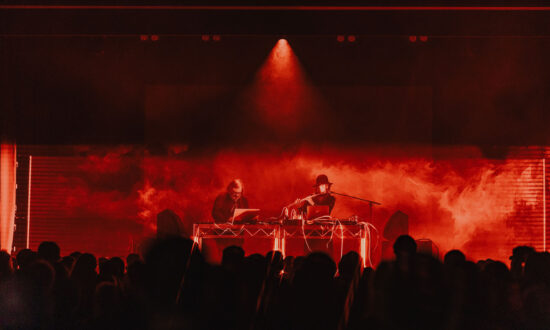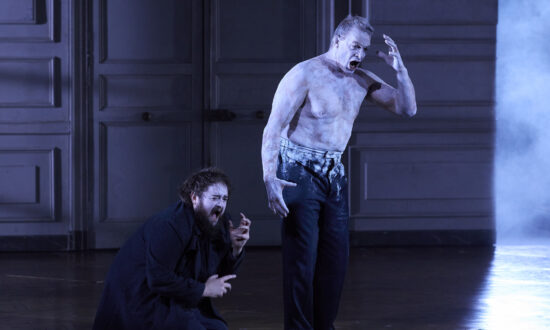The ASO’s first-ever performance of all nine Beethoven symphonies in a series (call it a ‘cycle’ if we must) began strongly with quite unbelievable daring in the first three symphonies. Scottish conductor Douglas Boyd truly has the terrier inside him, and to hear Beethoven played with the jolting contrasts and tenacious grip that he brings, with the ASO responding at its highest level, has been inspirational.
Boyd’s approach has already been described in this writer’s first review, so we need not spend any more time on that here. Suffice to say that he clearly sees rhythm as the prime driver in Beethoven’s music – at least in the symphonies. So it was no surprise to find Nos. 4 and 5 being treated in the same way.
One of the most interesting things in Boyd’s Beethoven series so far has been his conception of Symphony No. 4 in B flat major, Op. 60. This was towering and mighty, quite unlike the picture one tends to have of this work as being small-scale and Haydnesque in proportions. Its slow introduction was expansive and mystery-laden, conjuring a world that felt uncannily close to Mahler – remarkable given that when Beethoven composed this work, in 1806, Mahler’s parents were not even born.
But before one could ponder any such twists of history, the real business of this symphony began with a dose of fury. Certainly, the Fourth has playfulness, but with Boyd it also flexes its muscles; with the crack of a horsewhip it propels forward, piles on the crescendos, and by the end really screams. What a magnificently brave performance this was. I think rather more grace and refinement would not have gone astray at times, but the point was amply made: Symphony No. 4 can surely take its place next to the odd-numbered symphonies in terms of the intensity of its first movement.
The Fourth’s Adagio is a darling of a slow movement, and possibly his most rhythmic too, with its insistent dotted tick-tock beat against which arises one of Beethoven’s most fluent and singable of orchestral melodies. The woodwind were especially lovely here, warm-tinged and expressive as they played en bloc and singly. The ASO wind section has always been special, and tonight this was absolutely the case.
The simple joys of this ‘smaller’ symphony continued in its joyous scherzo-like third movement, whose skipping rhythms Boyd brought out with pronounced definition. This movement has one of the funniest Trio sections that Beethoven composed, with a swooping, lurching violin melody that sounds half-drunk against the woodwinds. This melody could have been played with more humour, but all else was plain and honest just as one imagined was intended. The Finale brought forth a wonderful bustle of ‘machine noises’ that Beethoven incorporates: someone needs to explain quite where he got these incredible sounds from (being as he was by this stage, verging on deafness).
Despite all the fun and games, it is Symphony No. 5 in C minor, Op. 67, that of course commands all the attention, and by extension, it is pivotal in terms of the interpretation brought by conductor and orchestra. Exploring Nikolaus Harnoncourt’s epochal set of recordings made in 1991 with the Chamber Orchestra of Europe, one can see exactly where Boyd, as its then principal oboist, cut his teeth with Beethoven, as well as what a fine player he was: the solo oboe adagio in the first movement of the Fifth is a sublime moment.
Now as conductor, Boyd has a separate vision of his own that pushes ahead of Harnoncourt in respect of energy level. That famous four-note motif in the Fifth was delivered in one swift, brave gesture that seemed to proclaim an even more defiant Beethoven. All through the first movement there was an overwhelming feeling of mobile energy – different from the granite-like, statuesque grandeur that one might usually associate with this work. It worked a marvel too, giving a razor edge to rhythm and intensifying the flow of ideas. The horns barked wonderfully, and that oboe solo, played by Joshua Oates, was spot on.
A noisy cough into his handkerchief ahead of the second movement signalled that Boyd might not have been entirely well in this second concert, but there was nothing amiss in what followed. The second movement had an affectionate lilt and ease but all the time governed by a tempo that maintained the forward momentum; its clarinet, bassoon and flute solos were all lovely.
The Fifth’s Scherzo third movement is even funnier than in the preceding symphony when, in the Trio section, Beethoven sets the cellos and double basses an almost impossibly brusque solo passage. At one point, he even tries to trip them up with a deliberate false entry, yet the ASO players dispatched it with nigh-on perfection and at breakneck speed. What delicious fun this was, capped off by a finale that bolted like a mob of angry greyhounds.
Curiously, this Fifth fell a little short in its emotional range, and this could have come down to flagging energy reserves but, nevertheless, there was so much was right about this performance, and it delivered a shock wave that still makes Beethoven a visionary of his age.
Boyd’s directing is never less than exciting, and the ASO is playing wonderfully in these concerts. Two down and two to go: make every effort to see them.
Adelaide Symphony Orchestra’s concert two in its Beethoven cycle was held at the Adelaide Town Hall on September 21. The concert series kicked off on September 14, with symphonies one, two and three. Read Graham Strahle’s review here.
Subsequent concerts will be held on September 21 and September 24-25. Bookings and details here.
Support local arts journalism
Your support will help us continue the important work of InReview in publishing free professional journalism that celebrates, interrogates and amplifies arts and culture in South Australia.
Donate Here




